All about watercress and its cultivation
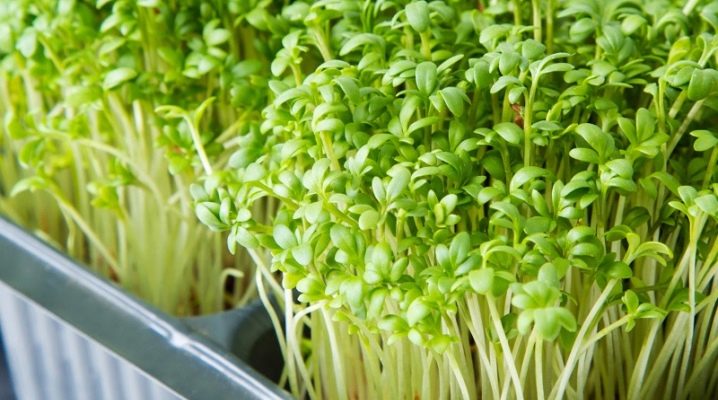
Watercress is a popular herb for healthy diets and lifestyles.... Not only young leaves are eaten, but whole sprouts. Another popular name is watercress. Iran is considered the birthplace of the culture; it is currently grown all over the world. Watercress grows well outdoors and indoors.
The culture has been known since ancient times in Africa and Asia, and over time gained popularity among Europeans due to its easy care and rich content of vitamins.
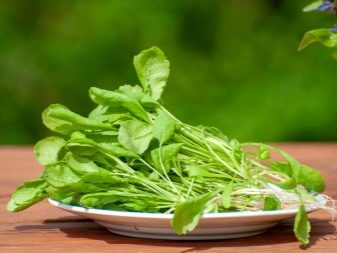
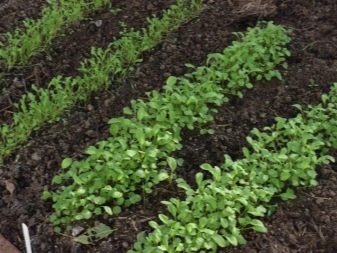
Description
Watercress can grow up to 50-60 cm in height. But it rarely reaches such a height, because it is recommended to eat only young sprouts. The plant is of interest not only for gardeners, but also for culinary specialists. Young leaves, interesting in shape, are often used by chefs as microgreens. Dishes decorated with greenery look light and fresh in spring. Leaves of the original shape and young sprouts enrich food with important micronutrients and fiber. Sprouts should be eaten only fresh when the plant contains the maximum number of valuable elements. In dried form, they lose all useful properties and acquire a peculiar smell. Watercress (other names are garden watercress, bedbug, tertizak) is an unpretentious culture, it can be grown on a personal plot, in a greenhouse or in a pot on a windowsill.
The culture coexists well with other plants in the open field and next to house flowers... In a favorable environment, it grows all year round and pleases with fresh greenery. Young leaves with a spicy taste can be consumed as early as the second week after the first shoots. The stems of the plant look very thin and weak; rosettes with pale green leaves are formed on them. The lower layer of leaves is harder, it is rarely eaten, and only the upper rosette and part of the stem are cut off. The size of the rosette depends on the plant variety. After blooming with small white flowers, the plants form seeds. Stems and leaves begin to lose vitamins and tenderness, they can no longer be eaten. Watercress seeds are also used in cooking and traditional medicine. They make infusions and squeeze out oil.
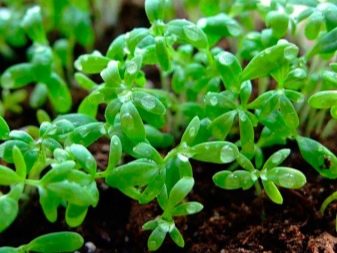
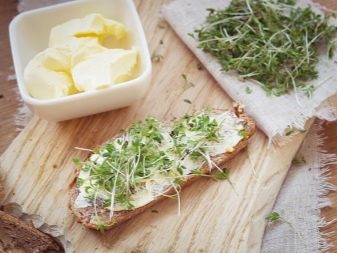
Types and varieties
There are many varieties of watercress. They differ in the shape of the leaves and their color, there are varieties with purple, white, red and even black leaves. Plants can be with leaves of the usual shape or curly, twisted, openwork. Most often grown classic species with a pleasant bitter taste of the leaves. Curly, whole-leaved and sowing species grow very quickly. They are classified as early and mid-season. Curly watercress has often cut leaves, which is reflected in the name. And the whole-leaved variety has larger leaves. In the second week, gardeners begin to harvest. The leaves have a pleasant spicy taste with a slight bitterness. These varieties are more suitable for vegetable dishes, salads or sandwiches, pleasantly refreshing the overall taste and imparting crunchiness.
Popular with gardeners variety of garden watercress "dansky". The plant of this variety does not need special care. The variety is cold hardy, so it thrives outdoors and continues to grow until fall. And at home, "Danish" watercress grows all year round. The broad-leaved species is distinguished by a large rosette with whole leaves.The diameter of the rosette reaches 15-20 cm. The first leaves and shoots can be harvested when the bush reaches 5-6 cm. This variety feels better in warm climates and is late ripening. To plant it in open ground, the soil should warm up a little better. But in care, he is as unpretentious as the rest.
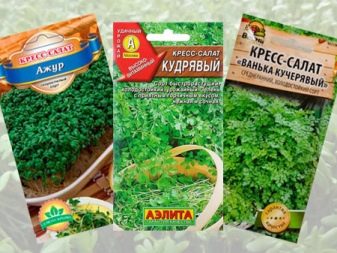
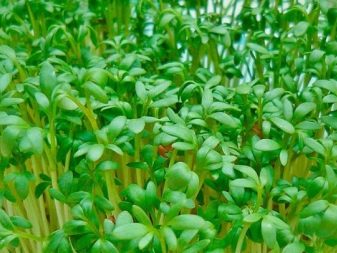
Landing
Although this plant is unpretentious to care for, it is better to prepare the soil on the site in advance. You need to dig up the soil, remove all weeds, add fertilizers if necessary (superphosphates or ordinary humus will do). You can also add calcium chloride. Immediately before planting, the soil should be loosened so that it is not too compacted. You can plant a crop directly in open ground. The first sowing is best done in April - early May, when the soil has already warmed up. An autumn sowing option is also possible, then the seeds are laid in the ground at the end of October, before the first frosts.
Sowing time in open ground directly depends on the climatic characteristics of the region. The main conditions for sowing crops on the site: the topsoil (about 4-5 cm) thawed and warmed up a little, the daytime temperature does not drop below +10 degrees, and the night frosts have already ended. Sowing earlier can trigger early shoot growth, which may freeze when night temperatures drop and will not develop enough.
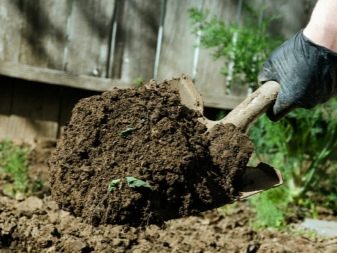

It is better to choose a place for planting in partial shade, the abundance of sunlight has a detrimental effect on young delicate leaves. It is best if direct sunlight hits the garden in the morning or evening hours, and not all day. It is better to plant a crop in places after beets, potatoes, onions and other root crops. But after its relatives (cabbage and other cruciferous plants), watercress does not grow in the best way. It is better to sow the plant in rows, at a distance of at least 10 cm from each other. You need to leave enough free space for the formation and development of foliage. When planted more densely, the plants feel uncomfortable, the leaves remain small, and the plant does not develop.
Close planting also makes the crop vulnerable to disease, pests and fungi. Before planting, it is recommended to fill the seeds with plain water and leave for 3-5 minutes. Each seed will be covered with a water film and separate from the rest. This will make it easier to sow the seeds into the soil (or substrate). Water with seeds is simply poured evenly onto the garden bed and leveled along the grooves. The seeds can be sprinkled on top with a small layer of earth. In the spring, the seeds of the bug are placed in the soil to a depth of 0.5-1 cm, and during autumn sowing, a thicker topsoil is made, about 2 cm. The topsoil is slightly compacted.
The beds do not need to be covered with the danger of night frosts, the plant is quite frost-resistant.
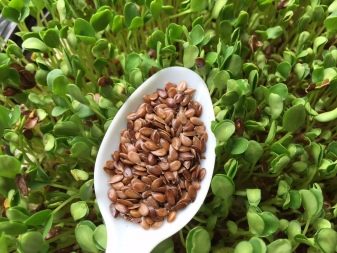

Care
The culture does not require special care. Even the most inexperienced gardener can grow it in a garden bed or in a pot. The plant does not like direct sunlight and high temperatures, with an abundance of sun it stretches and gives arrows, and the taste deteriorates. Therefore, the plant needs to provide adequate shade and sun protection. In care, watercress requires only regular watering and loosening of the soil, as well as removing weeds. The culture does not require special feeding. Growing problems should not arise.
Watercress is grown even without land. Instead of soil, coconut fibers, cotton wool, sawdust or paper napkins are used. The garden cress has slender stems with many leaves, ranging in color from almost white to dark green. The flowers of the plant are pale purple or white. After flowering, the plant becomes tough and loses its spicy flavor.
After the flowers appear, you can leave a few mature bushes to form seeds, and remove the rest by the roots.
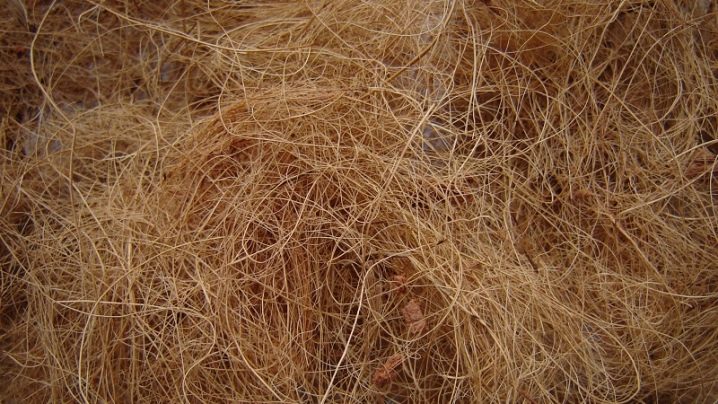
In the open field
In the beds, the garden cress thrives throughout the summer, provided there is sufficient watering and loosening of the soil.
- Loosen the plant needs to be neat, it has very delicate small roots that require good air exchange.
- Necessary remove all weeds.
- Watercress needs in regular abundant watering, but do not allow stagnation of moisture in the soil. During dry periods, watercress requires daily watering and loosening of the soil. The culture is very fond of moisture. With a lack of moisture, plants only give arrows with flowers and cease to form rosettes with leaves. It is necessary to establish an irrigation regime and observe it, and during the rainy season, you can refuse watering or make it rare.
- Any soil is suitable, it is good if it is moderately acidic or neutral. If there is insufficient fertility, organic fertilizers can be added before planting in the garden. During the vegetative process, it is not recommended to fertilize the soil, otherwise the watercress can change the taste and smell, accumulating nitrates in the leaves and stems.
- When the first sprouts appear, the watercress can be thinned a little, for each bush there should be about 10 square meters. cm. Then the plants will form large rosettes with leaves, and the stems will be stronger. With a lack of space, the leaves are small and tasteless.

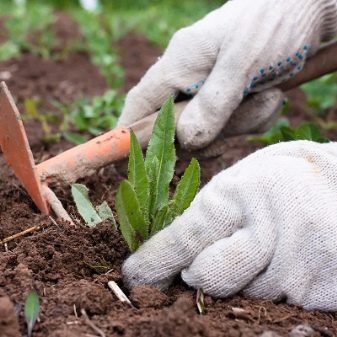
At home
Gardeners grow watercress at home on an ongoing basis.
- It is better to put the pot on the window, where sunlight only hits a fraction of the day. The plant does not like an overabundance of light. In the fall in winter, artificial light sources can be added if necessary, but this measure is completely optional.
- Watercress is also grown in ordinary soil, and using the substrate... The choice of soil does not affect the palatability of the plant.
- For landing, it is better to choose shallow container, drawer, or pot. It will be enough 10-12 cm in depth.
- Peat, coconut fiber or wood chips (and any other organic substrate) should be well spill with boiling water, this will exclude the possibility of mold growth of the substrate and roots.
- After sowing, the container is covered with foil... Leave the box (pot) on the windowsill, but not on the sunny side. When the first shoots appear (2-3 days), the film is removed. Young shoots can be sprayed and watered regularly in the morning.
- When growing watercress, do not overdry the soil, this leads to thinning of the stems and their elongation, and the leaves lose flavor. Once every 2-3 days, turn the container (pot) with the other side to the light, so the sprouts will evenly form bright leaves, and not arrows.
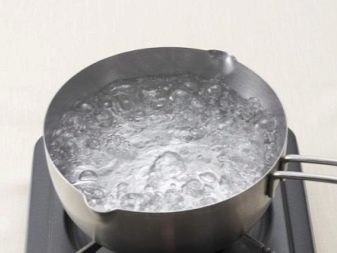
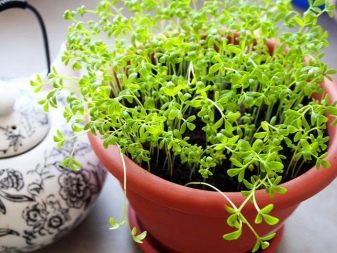
Diseases and pests
Diseases and pests rarely disturb this crop. The main danger is waterlogging of the soil and stagnant moisture. This can cause blackleg or rot. It is impossible to get rid of these diseases, and the only way out is a new crop. It is impossible to treat the plant with fungicides, it is dangerous to health. It is very difficult to wash off harmful substances from delicate leaves, so they can enter the human body and harm it.
From pests on plants can settle cruciferous flea. In this case, the stems must be treated with tobacco broth or sprinkled with tobacco dust. The cruciferous flea does not tolerate low temperatures, so it is recommended to spray the plants with ice water, the parasites will die, and this procedure will not damage the cold-resistant watercress. When growing watercress at home, gardeners rarely encounter diseases. This can only happen if soil from the backyard was used during planting.
In this case, it is better to remove the entire crop, change the soil and sow the plants again.

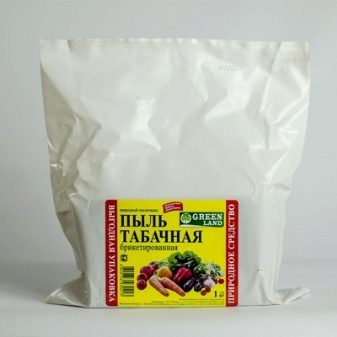
Cut
The first crop after sowing can be cut already in the 2nd week, when the plant reaches 10-12 cm in height. Harvest spicy greens throughout the summer and early autumn until the first frost. Bushes that have reached 15 cm are removed completely along with the roots.Cut leaves are stored only for a day, then they quickly turn yellow and fade. Cress is not harvested for future use, cut the leaves right before eating.
After cutting, the plant stops growing. To get a consistent crop of watercress, it must be repeatedly sown again. With daily cutting, sowing should be done every 10-12 days. It is best to eat plants, the leaves on which appeared 5-7 days ago. This watercress is considered the tastiest and richest in microelements and healthy vitamins.
You can cut the delicate stems with ordinary scissors. The lower leaves can be left on, they are practically tasteless and coarser.














The comment was sent successfully.